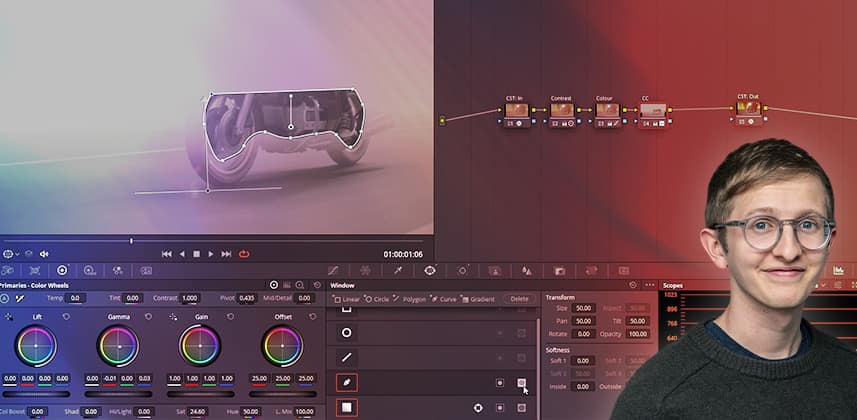Back to basics: A simple technique for adding colour interest to night images
Sometimes it’s hard to make an image look cinematic when you are working with a limited palette of neutral tones or heavy colour casts. I was recently grading a documentary and I found two big limiting factors to my creativity:
- The footage was (naturally) very dark
- The footage had heavy colour casts throughout due to street lighting that tended to ‘flatten’ the colour palette.
The visual compositions of the shots were my saving grace. They allowed me to isolate and separate the foreground from the background using a consistent, straightforward approach using broad Power Windows.
This creative grading Insight explores adding colour contrast to make a night image pop, using foreground separation. This example uses two Sony clips shot at night for a motorbike documentary.
The technique used here can be used on any camera/footage where you have a monochromatic colour cast but want to add visual interest. It also has the benefit of being quick to execute, especially if you have hundreds of shots to get through with a limited amount of time/budget.
Key takeaways from this Insight
By the end of this Insight you should understand how to:
- Identify areas where colour separation could improve the image
- Make colour contrast decisions based on the content of the image
- Create negative shape mattes
- Adjust opacity of shape mattes to dial in your corrections
Related Insights
- How to Build A ‘Day For Night’ Look – Color Correction Technique – What does it mean to shoot film or video as ‘Day for Night’? Learn the terminology and how to do it in this video tutorial.
- How To Blend Between Color Corrections Into The ‘Day For Night’ Look – DaVinci Resolve’s node tree makes it tough to dissolve between two completely different Looks. Learn how to do it easily, without getting lost in keyframes.
Questions or Comments? Leave a comment!
Is this Insight useful to you? Let us know! Mixing Light is all about community discussions and we’re curious if you found this helpful, if you have something to add, or if you have more questions you need answered?
– Luke
Member Content
Sorry... the rest of this content is for members only. You'll need to login or Join Now to continue (we hope you do!).
Need more information about our memberships? Click to learn more.
Membership optionsMember Login


